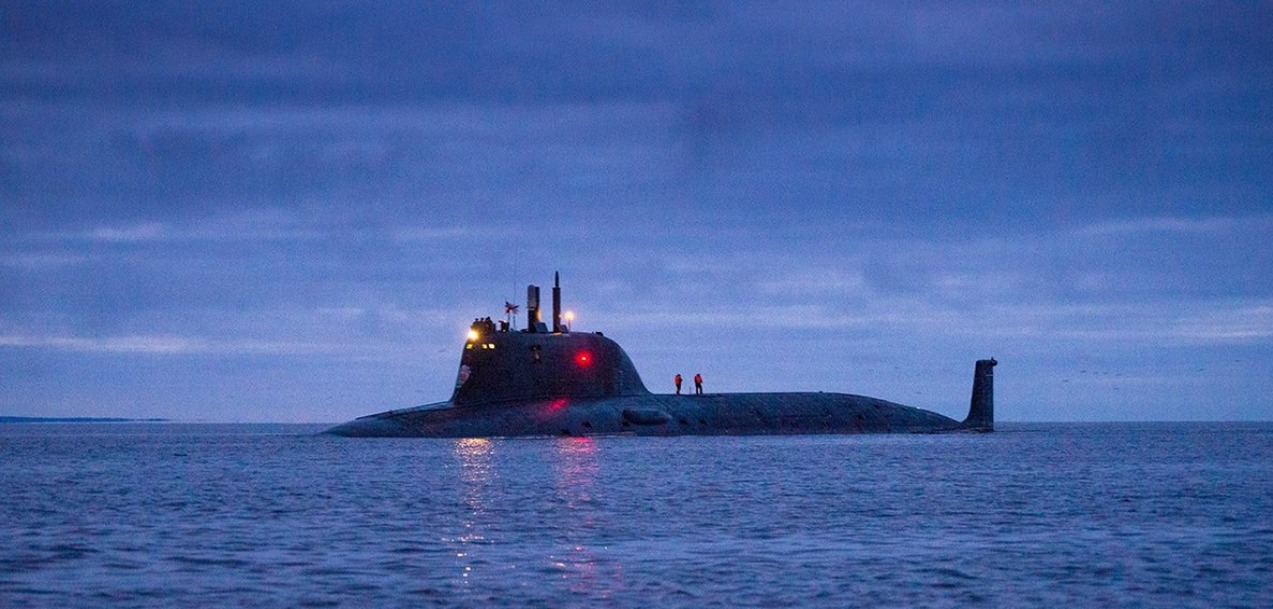Russian warships led by the frigate Admiral Gorshkov have concluded their visit and left the Havana port in Cuba. The Russian adventure in the US backyard had fluttered American media despite the US officials calling it a regular visit.
“Today a group of the Northern Fleet’s ships led by the frigate Admiral of the Fleet of the Soviet Union Gorshkov has completed its unofficial visit and left the port of Havana in the Republic of Cuba,” the press office said in a statement.
It said that after leaving the territorial waters of Cuba, the Russian Northern Fleet’s naval group will continue performing missions in accordance with its long-distance deployment plan.
The press office said that Cuban President Miguel Diaz-Canel’s visit to the frigate Admiral Gorshkov and the nuclear-powered submarine Kazan was a remarkable event for Northern Fleet sailors.
Earlier, nuclear submarine Kazan and Admiral Gorshkov conducted drills on the use of high-precision missile weapons in the Atlantic Ocean, according to Russian MoD. The report earlier noted that the crews of the frigate and submarine were practicing the use of high-precision missile weapons using computer modeling against naval targets, indicating naval groups of a mock enemy located at a distance of over 600 kilometers.
Russian nuke submarine Kazan, which was traveling without nuclear weapons, was widely reported to be stationed just 90 miles off Florida.
The Kazan is a Yasen-class submarine. It is extremely quiet and “at par with” the latest US submarines.
Edward Geist of the US-based RAND Corporation describes Yasen-class submarines as “the crown jewel of the contemporary Russian Navy and perhaps the pinnacle of present-day Russian military technology.”
The 13,800-ton Yasen-class submarine was designed by the Malakhit Marine Engineering Bureau and built by Sevmash Shipyard in Severodvinsk. Another upgraded version, the Yasen-M, has a quieter nuclear reactor, additional sensors, and new quieting technology. The submarine is 119.8 meters long and can travel 31 knots when submerged.
Since the Yasens are effectively cruise missile submarines, they are frequently assigned the unique vessel classification “SSGN” rather than “SSN.” The letter “G” stands for “guided missiles.” The Kazan is capable of attacking other submarines and ships and taking out enemy ballistic missile submarines. It can quickly hit ports and naval sites and is designed to take out carrier battle groups.
Analysts have determined that the Virginia Class of the US Navy and the Astutes of the Royal Navy, the primary Western equivalents of the Russian Yasen-M class, are substantially smaller.
The Kazan can carry the (3M55) Onik missiles, which have a range of 320 nautical miles (or 592.64 kilometers). Submarines used for land attacks can carry the 1,600 nautical miles (3963.2 km) range (3M14K) of Kalibr missiles. Land-attack missions can also be carried out with the Oniks.
There are eight ΡМ-346 complex (3-14B) vertical launch tubes for Onik and Kalibr cruise missiles on any Yasen-class submarine. The system can launch missiles using the submarine’s surface and underwater positions. The sub can also be equipped with hypersonic missiles.
Alexei Rakhmanov, general director of United Shipbuilding Corporation (USC), had previously stated that the 885 (M) project would deploy Zircon hypersonic missiles on nuclear-powered Yasen class submarines, with preparations already underway.
Writing for Naval News in 2021, Naval Analyst H.I. Sutton said, “The Yasen-M Class boats are larger and carry more weapons than their western equivalents. They will also be quicker to field hypersonic weapons (although service introduction is going slower than previously reported). But they carry fewer cruise missiles than the enlarged Block V Virginia Class. This will significantly narrow the gap even before the US Navy adds hypersonic weapons and the anti-ship capable Tomahawks.”

That said, the Yasen-class submarines are notorious for operating close to the United States. When questioned about the threat posed by Chinese and Russian cruise missile submarines operating close to the US mainland, USNORTHCOM commander Gen. Glen VanHerc stated last year that Russia had been deploying its Yasen-class nuclear cruise missile attack submarines more regularly in recent years.
“[The risk is] absolutely increasing. Within the last year, Russia has also placed their [Yasens] in the Pacific,” he said. “Now, not only the Atlantic, but we also have them in the Pacific, and it’s just a matter of time – probably a year or two – before that’s a persistent threat, 24 hours a day. That impact has reduced decision space for a senior national leader during a crisis.”
- Contact the author at sakshi.tiwari9555 (at) gmail.com




